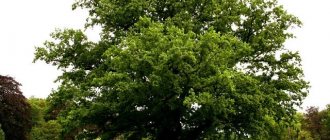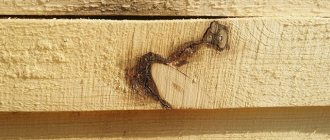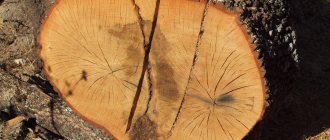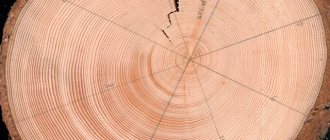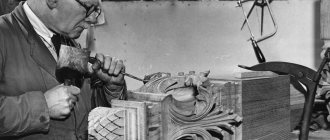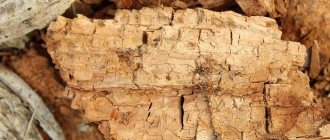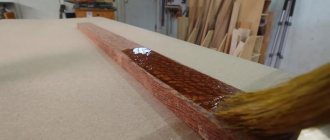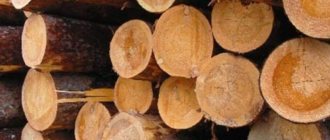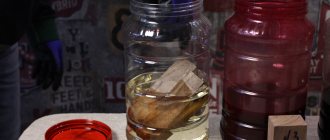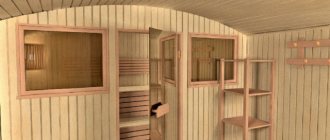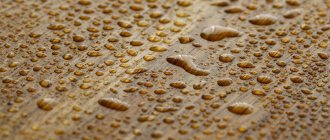- Start › Production and description of building materials:
This article will introduce one of the most important resources used in construction – wood. Wood is the inner part of a tree, located under the bark. Wood is widely used in industry and everyday life. Its high hardness, density and strength are key factors. But in the selection of high-quality material there are a number of shortcomings, which implies wood defects.
Let's focus on the main ones:
- Primary, secondary and mechanical defects of wood;
- Group of defects – knots;
- Violation of integrity - cracks;
- Defects in the shape of the trunk;
- Defects in the structure of wood;
- Chemical wood stains;
- Fungal lesions of integrity;
- Biological damage;
- Foreign inclusions;
Wood defects are shortcomings, features and defects of wood, both the entire trunk and its individual sections, which are various deviations from the norm. Existing deviations reduce the quality and value of wood and limit its practical use.
Primary and secondary wood defects
Typically, defects are formed when a tree grows in unfavorable conditions, when the trunk is damaged by pests (wood grinders, bark beetles, etc.) or fungi, or when the fibers are rotting (see figure). These are primary wood defects that occur during the overall growth process of the tree.
Mechanical defects of wood. Processing defects
Deviations from the ideal structure occur during logging, for example, poor-quality felling and an incorrectly chosen direction of tree fall, causing the butt to split. During the processing process, mechanical defects in wood are revealed - these are processing defects. They are distinguished in the following types: wane, risks, and damage of a local nature, for example with a saw, is called a cut, waviness, fluffiness, mossiness, scuffing, gouges. A torn end is characterized by the presence of small indentations, tufts or small particles of wood, or burrs on the end of the part. Mechanical defects also include a flake, chip, dent, grinding, there are continuous and intermittent fringes, ribbons of bundles of fibers or wood that have not completely separated on the edges of parts, burns.
Lumber products change shape when stored, dried, moistened or sawed. These changes are classified as warping and vary in degree (see figure).
Lumber is also subject to defects - rot, cracks, wormholes, which are secondary defects that arise during storage and use of wood.
Features and defects of wood are divided into 9 groups of defects. The main ones:
- knots;
- cracks;
- trunk shape defects;
- structural defects of wood;
- chemical stains;
- fungal infections;
- biological damage;
- foreign inclusions, mechanical damage, processing defects;
- warped.
Defects in wood processing
Sawing defects
Obzol
- bark from the surface of the trunk that remains on the edge of the lumber. Reduces the useful yield of materials, limits the scope of application of the resulting parts.
Risks
- a series of marks on lumber from cutting tools after sawing, planing or milling.
Waviness
- depressions and elevations in lumber that have arisen due to bevel sawing or improper drying.
Hairiness
- protruding unseparated fibers on the flat edges of lumber, which make it rough. Occurs when sawing with non-sharpened tools, errors in sharpening/spreading saw teeth, insufficient tension of the saw blade (wandering sawing), etc.
Mossiness
- a large amount of pile and a lot of unseparated wood fibers on the flat edges of the lumber.
Fringe
- a continuous or torn strip of many unseparated fibers on the edges of a board or beam. Occurs during sawing in the warm season, when processing cross-grained, twisted or knotted wood, or due to irregularities in setting up and using woodworking tools.
Other processing defects
Bevel cut
- beveled plane of cut on round timber.
Torn end
- ribbed recesses and elevations, as well as tufts and fibers on the end plane.
Visor
- wood extending beyond the end plane, resulting from incomplete sawing of the assortment.
Zakorina
- part of the bark that is preserved on the veneer (may fall out, leaving holes and grooves).
Burr
- a pointed protrusion that is adjacent to the edge of the lumber.
Badass
- a piece of wood with sharp edges that has not come off after planing.
Gouges
— shallow recesses in places where pieces of fibers are torn off.
Rippling Veneer
- densely placed shallow grooves parallel to the longitudinal axis of the fibers.
Dent
- a notch in lumber that occurs due to local deformation when struck with a sledgehammer (or other tool) and when the tree is felled.
Scratch
- a mark on lumber (indentation) after contact with a sharp object.
Snatch
- a recess across the entire width of the processing surface, which occurred when part of the assortment was removed during milling or processing with an electric planer below the calculated level.
Non-milling
- unprocessed area of the part.
Scallop
- an unprocessed area of lumber that rises above the milled part (a consequence of incorrect cutter settings).
Sanding
— cutting the assortment below the required level during grinding.
Under-grinding
- untreated area of the surface of the assortment, which has already been ground.
Burn
- a blackened zone on the surface of the log, which appeared when the moving parts of a woodworking tool rubbed against the wood.
Knots on a tree trunk
Knots are the first of the groups that bear the main variety-forming defect, combining two types: knots and eyes. The woody content of the knots has a finer structure of the annual layers and a dark color; they are the base of the branches, which are enclosed in the wood of the trunk itself. There is both the appearance of an open knot and an overgrown knot.
Overgrown knots have no variety and are found exclusively in round materials.
Open knots have varieties (see Fig.) in shape (oblong, oval, round), position in the assortment (edge, ribbed, end, seam, stitched), relative position (groups, branched, scattered), degree of fusion (falling out, fused, not fused or partially fused), according to the condition of the wood (healthy, healthy with cracks, dark healthy, light healthy, rotten or decayed, tobacco), according to the surface exit (through or one-sided).
Due to them, the homogeneity of the structure and strength of the wood is disrupted, and hence the grade. It is difficult to process the material, since healthy knots have a greater hardness of wood than the surrounding wood. Jointed, ribbed, group and oblong knots reduce the strength of parts. Tobacco knots may indicate the presence of heart rot in the trunk.
Knotiness is the main defect of forest materials
As the tree grows, the lower branches experience a lack of light as they are shaded by the upper branches; so they die and fall off. As a result, in the butt part small knots are found in small quantities, in the middle part there are more of them and they are larger, and, finally, at the top there are the largest knots.
Knots are divided depending on the degree of fusion with the wood of the trunk
Rice. 1- stitched knot, 2- clawed knot.
into the following two main groups: fused (fully or partially) and non-fused.
Formation of various cracks
Cracks are a violation of the integrity of the timber, and if they are through, they reduce the mechanical strength in many cases. Looks like a longitudinal break in the fibers. You can divide them (see figure) by type, position in the assortment, depth and width.
The types of cracks are as follows: metic type (simple and complex); spanking; frosty; shrinkage crack.
By position in the assortment: lateral; reservoir; edge; end
By depth: not through (deep and shallow); end-to-end
Width: closed; dispersed.
The formation of cracks is influenced by both natural factors and internal stress that arises in the trunk during tree growth. Frost crack is the result of the influence of severe frosts on internal moisture (expansion process). This process leads to through cracks directed radially. The stress that arises inside the trunk causes the annual layers to separate from each other and cause peeling cracks. Metik cracks run along the trunk from the butt to the top. The results of shrinkage are revealed when the wood is dried. Additionally, you can study ways to eliminate them.
Rotting
Rotting is understood as a negative process expressed by the decomposition of wood fibers. Rotting occurs due to certain activities of mold, fungi and pathogens with a destructive effect. Rotting can occur even while the tree is growing; identifying such defects reduces the value of the raw material, since it implies damage to its layers and the development of various wood diseases.
Certain storage fungi are also parasitic on felled tree trunks; they can infect both felled trees and lumber. This is facilitated by non-compliance with storage conditions or insufficient processing that deviates from the standard.
Mainly, the development of putrefactive processes is promoted by higher than normal humidity. Rot in wood affects its environmental friendliness and reduces the quality of workpieces in production to three points or less.
In the initial stage of its development, rot is determined by the appraiser by the changed color of the wood and by a decrease in its strength. Then gradually the affected area is destroyed and transformed into dust. Often, after cutting down a tree, a completely rotten internal part of the wood is discovered, although there may be no changes on the outside.
Rot in the core is caused by the development of certain microorganisms that penetrate into the middle part of the trunk through wounds and knots. Thus, pathologically altered wood is not suitable for making the necessary lumber, but often, after some additional processing, it is used to create artistic products that are unique in appearance.
Dry rooms and a good ventilation system protect the harvested wood from rot. Harvested lumber is subjected to treatment with special antiseptic agents and impregnations.
Different types of wood rot
Defects associated with the shape of the trunk
Defects in the shape of the trunk of a growing tree are distinguished in the following types:
- conciseness;
- backbone (ribbed and rounded);
- ovality;
- growth;
- curvature (complex and simple).
Curvature (see figure) is a versatile or unilateral curvature of the trunk along its entire length. There are simple and complex (several bends in different directions) types of curvature, which make sawing difficult and produce a lot of waste.
When sawing, the roughness (see figure) produces poor-quality material, with the appearance of a large number of cut fibers. This is a thickening of the butt of the trunk in relation to the entire trunk.
The swarms are a ribbed root structure; when cut transversely at the end of the trunk, it looks like a star-lobed arrangement of annual fibers. This material is highly warped and has reduced strength.
Growths on the trunk are accompanied by curling of the wood, which is more common in deciduous trees - this is a local sharp thickening of the trunk.
Nodules are more common on the butt part of the trunk. Accompanied by smooth growths on the surface. The mouth guards are expressed in a more prominent form, appearing in the places of dormant buds, they look in the form of drops.
Wood structural defects
Defects in the structure of wood (see figure) are divided into the following types: heel; fiber inclination; traction wood; curl; curliness; pockets; eyes; core, double and mixed core; germination; stepson; cancer; dry side; tarred; false nucleus; internal sapwood; spotting and cross-layering. Let's look at the main types.
The cross-layer is characterized by the different direction of deviation of the fibers from the axis of the tree. The lateral load of such wood is poorly perceived. Curling refers to a type of fiber inclination - a wavy arrangement of fibers. A curl is a curvature of the local character of the annual layers.
Roll occurs more often in coniferous wood; changes in structure occur in compressed areas of the trunk and branches. These are arched areas that form in curved trunks or obliquely growing trees. There is a displacement of the core during cross cutting. This defect contributes to the warping of boards and beams, reducing the strength and uniformity of the material structure.
The double core is clearly visible when the log is cut crosswise. The tree trunk in this place most often has an oval shape. Between the cores there is usually a growth in the form of overgrown bark. This deficiency leads to cracking, processing difficulties and increased wood waste.
The internal sapwood is expressed at the end of the trunk in the form of several or one ring-layers of different widths, having a lighter color than the core of the wood. This group of annual layers in the core of wood has the properties, structure and color of sapwood. This defect is characteristic of deciduous trees, often found in ash and oak.
The false kernel is the inner part of the trunk with a dark color in different shades. Shapes include round, lobed, star-shaped and eccentric. The darker color of the false heartwood differs from the sapwood.
The pocket is a cavity filled with gums or resins located inside the annual layers. Such resin pockets reduce the strength of the wood, spoil the surface and cannot be glued and finished.
When wood is twisted, its fibers are arranged wavy, especially at the butt of the tree. This material is highly valued when molding sliced veneer, but the processing process itself is difficult to handle. This defect is characterized by the formation of growths and swellings at the root part of the trunk.
Sprouting is a defect in a particular area that appears as a result of mechanical damage (tarring, fungal spots). In this case, not only the appearance deteriorates, but finishing becomes more difficult.
A curl is a curvature of the annual layers due to the influence of trunk knots or shoots. They can be one-way or end-to-end. This defect reduces strength, so it is not used in the manufacture of parts that carry additional load. Defects such as resin pockets, tar and heel are characteristic of the group of coniferous species.
Spotting is stripes colored differently than the entire body of the trunk, which do not affect the hardness of the wood. Spotting appears during tree growth.
A tar is a section of softwood material that is heavily impregnated with resin. Places are darker in color. Resin has no effect on strength and is less susceptible to rotting, but makes the overall finishing of the material and painting more difficult.
Canker is a wound on a tree trunk caused by infection with parasitic fungi or bacteria. The affected area of the wood does not heal and there is gumming around the perimeter of the area, and the opposite side of the trunk looks swollen.
Affect strength
Knots negatively affect the strength of wood. The degree of influence is determined by the number of knots, their relative sizes, location (single or group, on a wide plane or on an edge), connection with the surrounding wood (healthy fused or falling out, etc.). Data obtained by G.G. Mudrovoy, as a result of testing wood samples of construction sizes, show that the decrease in bending strength depends not only on the relative sizes of the knot, but also on its position both along the length and height of the bending element. Knots located in the stretched zone reduce the strength the most, especially if the knot extends to the edge. Knots measuring 0.1 times the height of the element reduce strength by 10-12%, and knots measuring 0.25 times the height of the element - by 25-30%. The influence of knots in the compressed area, as well as near supports, is much less.
Drop-out, loose, painted and other knots in boards, bars and parts of joinery that are suitable for oil painting or veneering with veneer plywood are drilled out. The resulting through holes or non-through recesses are sealed with glued plugs, and the direction of the fibers of the plugs should approximately coincide with the direction of the fibers of the board or joinery piece. At plywood factories, knots in plywood are sealed using special automatic machines. To remove and seal knots in carpentry and construction parts, use a vertical drilling machine with special drills, proposed by B.K. Nechunaev.
Fungus can grow in wood
Fungal lesions are a group of defects that occur with the participation of fungi, which can either cause the destruction of wood or not at all affect its strength, but have the property of changing color.
There are only 6 types of such fungal lesions: mold, mushroom core spots, sapwood mushroom stains (colored spots - dark and light, deep, surface and sublayer), browning (lateral and end), rot and hollow.
Mold appears as a continuous coating or stain on areas of the wood surface. It appears during damp storage of timber and colors the surface of the wood pink, black and other colors, which depend on the color of the mycelium and spores.
Fungal heartwood stains do not reduce the strength of wood; they appear in the core of the tree under the influence of wood-destroying and wood-staining fungi. They are recognized in various forms - rings, holes, a continuous affected area in the center of the trunk, often extending to the periphery.
Sapwood fungus stains are areas of colored sapwood affected by a wood staining fungus that does not cause rot in cut wood. It is noted in the form of stripes, elongated spots or entire surface lesions. These colors are characteristic of coniferous species. Fungi cause blue, greenish or gray coloration. Light colors do not mask the wood texture, dark colors of sapwood paint it in dark tones and mask the texture. Deep sapwood colors penetrate into the texture to a depth of more than 2 mm, and sublayer colors are located at some distance from the general surface.
Browning affects hardwood with a brown color. In felled wood, biochemical processes occur that reduce the hardness of the wood. The brown color during end browning originates from the end and goes along all the fibers. Lateral browning begins from the side surface and spreads towards the center of the timber.
Rot is areas of wood that are abnormal in overall color, which may or may not reduce the hardness of the material, arising from the influence of wood-decaying fungi. The first stages of fungal infection do not change the quality and value of the wood, but only change the color of some areas.
It has several varieties, distinguishable by color and structure: variegated sieve, brown fissured, white fibrous.
The types are distinguishable in the following types: sapwood (soft and hard), external rotten and sound.
Variegated sieve rot is characterized by reduced hardness and variegated color. Such wood retains its integrity for a long time, later it becomes soft and splits. Brown cracked rot causes cracking of the material along and across the fibers. White fiber rot attacks lignin and cellulose and discolors the wood in a marbled pattern. When severely damaged, it easily splits and crumbles.
The type of sapwood rot has pinkish-brown or yellowish-brown hues in softwoods, and a marble-like pattern in hardwoods. The hard type of this rot is close to the same hardness as the surrounding wood. Soft sapwood rot has reduced hardness.
External rotten rot occurs both in the sapwood part of the timber and in the core. This brown, cracked rot occurs during improper and long-term storage under the constant strong influence of wood-decaying fungi.
Core rot occurs in the core of a tree during growth and is characterized by reduced hardness. The first stages of such rot do not affect mechanical performance. Appears in the form of elongated spots or stripes.
Warped
Warped
— deformation of edged lumber during sawing, drying or storage.
Warping during drying occurs due to the difference in drying of the material in tangential and radial orientation. Warping may be an indirect sign of another defect: cross-layers, heels, knots, etc. During drying, sapwood areas lose moisture faster. Their volume decreases faster than parts of the part consisting of wood that was closer to the core, so it bends towards the sapwood. The degree of manifestation of the defect changes with changes in wood moisture content.
Warping may be a consequence of residual stress in the wood during sawing (manifests itself during milling and sawing of the board).
This defect complicates the use of lumber. At a high degree of manifestation it leads to complete unusability of parts. It complicates harvesting and reduces the yield of useful wood.
To prevent warping, the boards are dried compressed in accordance with a specially selected regime, which does not lead to the appearance of strong stresses inside the part. The remaining stress is removed using additional heat and moisture treatment.
The possibility of warping is taken into account when gluing wooden parts.
Warp measurement
- Longitudinal warping
- measured by the ratio of the longest arrow of deflection and the length of warping (expressed as a percentage). - Transverse warpage
- measured by the ratio of the maximum deflection and the width of the lumber (expressed as a percentage). - Winginess
- measured by the maximum deviation of the surface of the part from the required plane.
Warping of laminated plywood is measured using a ruler, which is applied to the sheet diagonally (expressed in centimeters in relation to 1 linear meter of diagonal length).
Types of warping
- Longitudinal (along the layer).
The boards are bent towards a wide plane. There are simple longitudinal (1 bend) and complex longitudinal (more than 1 bend) warping. - Longitudinal along the edge.
Folding the board towards the edge. - Transverse.
Deformation of the material in the cross section, which depends on the place where the part is cut: the edges of the boards are bent towards the sapwood; the cross-section of the bars, in which the annual layers are located diagonally, takes the shape of a rhombus; For lumber that is cut from heartwood, the edges taper and become thinner than the central part of the piece. - Winging (helical warping).
Spiral warping along the length of the lumber. Occurs during accelerated drying due to different rates of moisture release in different parts of the part. Winging is the name given to the torsion of round timber, which is a consequence of another defect (for example, cross-grain).
Biological damage
Biological damage to wood occurs under the influence of organisms that damage the wood. These include insects, fungi, bacteria and algae. Holes in the wood are revealed in cases of damage to the trunk by parasitic plants (mistletoe), which significantly reduces the mechanical properties. The cavities in the trunk originate from damage by birds. This lesion makes the practical use of wood difficult. Larvae and beetles destroy wood with wormholes. This is clearly visible under the bark of the tree - traces of grooves and passages of various shapes.
Logs and beams for building a house
Wooden materials for building a house or bathhouse are selected so that they are not subject to warping. For a log house, it is important to select high-quality logs and beams without large knots and wormholes, without rot and mold. They should have a uniform light color, smooth and even sides.
The MariSrub company independently produces lumber for the house project. This allows you to track the procurement of raw materials and each stage of production, which guarantees high quality products. In addition, own production means saving money on transportation and paying for contractors’ services. That's why we offer low prices for lumber!
Each product undergoes antiseptic treatment and condensation drying. This drying is safe for wood. It eliminates the appearance of defects, manufacturing defects and defects, including warping. In addition, after condensation drying chambers, logs and beams crack less and retain their original color, naturalness and physical properties longer.
And treatment with antiseptics will protect the tree from the negative effects of moisture and insects, ultraviolet radiation and temperature changes, frost and wind. The lumber will not become moldy or darken, will not deform or rot. We comply with GOST requirements, storage and transportation standards, which eliminates the occurrence of defects!
At “MariSrub” you can order the construction of a wooden house from timber or logs on a turnkey basis. Complex construction includes the creation of an individual project or modification of a ready-made version, installation of a log frame, foundation and roof, finishing inside and outside the house, installation and commissioning of utility networks. We guarantee quality construction on time!
